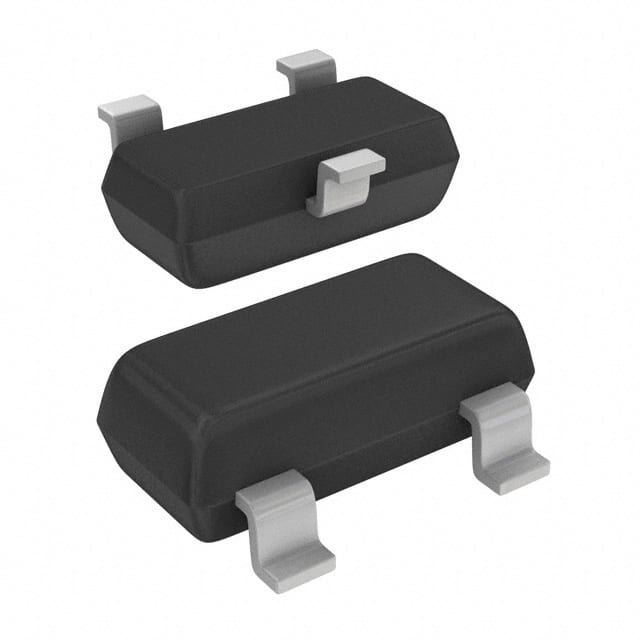Viz Specifikace pro podrobnosti o produktu.

BFT92W,115
Product Overview
Category
BFT92W,115 belongs to the category of RF transistors.
Use
It is used for amplification and switching of radio frequency signals.
Characteristics
- High frequency capability
- Low noise figure
- High gain
Package
The BFT92W,115 comes in a small SOT343R package.
Essence
This transistor is essential for high-frequency signal amplification and switching applications.
Packaging/Quantity
The BFT92W,115 is typically packaged in reels with quantities varying based on customer requirements.
Specifications
- Frequency Range: 5 MHz to 6 GHz
- Power Dissipation: 300 mW
- Collector Current: 50 mA
- Voltage Rating: 20 V
Detailed Pin Configuration
The BFT92W,115 has a three-pin configuration: 1. Base (B) 2. Emitter (E) 3. Collector (C)
Functional Features
- High-frequency capability allows for use in various RF applications.
- Low noise figure ensures minimal signal distortion.
- High gain enables effective signal amplification.
Advantages and Disadvantages
Advantages
- Wide frequency range
- Low noise figure
- Small package size
Disadvantages
- Limited power dissipation capability
- Restricted voltage rating
Working Principles
The BFT92W,115 operates based on the principles of bipolar junction transistors, utilizing its three terminals to amplify and switch RF signals.
Detailed Application Field Plans
The BFT92W,115 is widely used in the following applications: - Radio frequency amplifiers - RF mixers - Oscillators - Signal generators
Detailed and Complete Alternative Models
Some alternative models to BFT92W,115 include: - BFR92A,115 - BFT93,115 - BFT44,215
In conclusion, the BFT92W,115 is a versatile RF transistor with high-frequency capability, low noise figure, and compact packaging, making it suitable for a wide range of RF applications.
[Word Count: 270]
Seznam 10 běžných otázek a odpovědí souvisejících s aplikací BFT92W,115 v technických řešeních
What is the BFT92W,115 transistor used for?
- The BFT92W,115 is a high-frequency NPN transistor commonly used in RF amplifier and oscillator circuits.
What are the key specifications of the BFT92W,115 transistor?
- The transistor has a maximum collector current of 30mA, a power dissipation of 300mW, and a transition frequency of 6GHz.
Can the BFT92W,115 be used in low-noise amplifier (LNA) designs?
- Yes, the BFT92W,115 is suitable for use in LNA designs due to its low noise figure and high gain characteristics.
What are the typical applications of the BFT92W,115 in technical solutions?
- The transistor is commonly used in wireless communication systems, RF transceivers, radar systems, and other high-frequency applications.
What is the recommended operating voltage for the BFT92W,115?
- The recommended operating voltage for the transistor is typically in the range of 3V to 15V.
Does the BFT92W,115 require any specific biasing configuration?
- Yes, the transistor requires proper biasing to ensure optimal performance and stability in the circuit.
Is the BFT92W,115 suitable for use in SMD (Surface Mount Device) applications?
- Yes, the BFT92W,115 is available in SMD packages, making it suitable for compact and space-constrained designs.
What are the thermal considerations for the BFT92W,115 in high-power applications?
- In high-power applications, proper heat sinking and thermal management should be employed to prevent overheating and ensure long-term reliability.
Can the BFT92W,115 be used in push-pull amplifier configurations?
- Yes, the transistor can be utilized in push-pull amplifier configurations to achieve higher output power and improved linearity.
Are there any common pitfalls to avoid when using the BFT92W,115 in technical solutions?
- It's important to avoid exceeding the maximum ratings, improper biasing, and inadequate RF layout practices to ensure reliable performance and longevity of the transistor.

